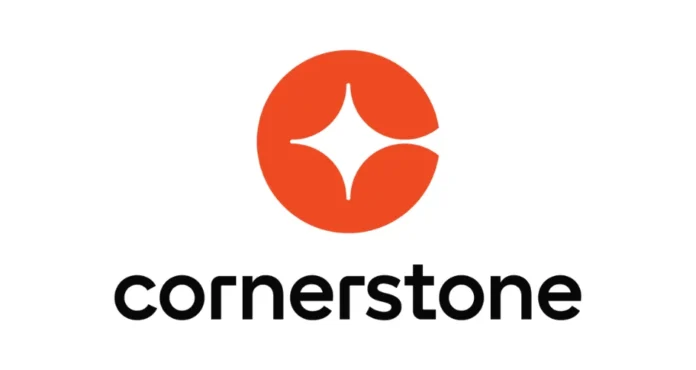Company background and challenge
Cornerstone OnDemand – a HR technology SaaS provider – offers talent management solutions for recruiting, training, and employee development. In seeking growth, Cornerstone faced a dual challenge: build greater brand awareness among HR professionals while dramatically increasing marketing-qualified leads (MQLs) at a lower cost.
After a leadership change in the digital marketing team, the company realised its lead generation strategy needed a revamp to meet ambitious growth targets. The goal was clear – promote Cornerstone’s platform with high-value content, engage the right B2B audience, and convert that interest into tangible leads and customers.
Thought leadership content strategy
To tackle this, Cornerstone adopted a thought leadership-driven content marketing strategy centred on long-form content. The marketing team – in partnership with an agency – developed valuable resources such as in-depth e-books, research-driven whitepapers, and live webinars that addressed key HR industry challenges.
For example, one flagship piece was a free e-book (e.g. “What is ‘Recruitment Hacking’?”), which offered actionable insights to HR professionals and could be downloaded in exchange for contact details. By planning a content-led approach, Cornerstone ensured each content asset provided genuine thought leadership – educating prospects on new trends (like modern recruiting techniques) and best practices rather than just pitching product.
This not only built trust and credibility with the target audience but also gave prospects a compelling reason to share their information, fuelling the top of the funnel with quality leads. The content calendar featured a mix of formats (industry reports, how-to guides, and webinars) published at a steady cadence over the campaign period to keep the audience engaged and nurture them through the buyer’s journey.
LinkedIn as a key distribution channel
Cornerstone identified LinkedIn as the pivotal distribution channel to get this thought leadership content in front of the right audience. Why LinkedIn? The platform is the world’s largest professional network and a natural environment for thought leadership content in B2B.
It offered precise targeting capabilities – the marketing team could filter by job title, industry, region, and even specific accounts to reach HR decision-makers at the organisations most likely to need Cornerstone’s solutions. Bhanu Chawla, Cornerstone’s Head of Digital Strategy (EMEA), noted that LinkedIn provided “a platform where we could build awareness for our brand and proposition while driving leads at the same time,” thanks to its professional audience and targeting granularity.
On LinkedIn, Cornerstone employed Sponsored Content ads prominently to promote its long-form assets. They tailored these sponsored posts to various segments – for instance, crafting industry-specific messaging and imagery for different HR sub-niches and regions in EMEA. A post offering the free e-book on recruitment innovation is one example: it teased the topic (“So what is ‘Recruitment Hacking’?”) and invited professionals to download the full guide.
By using LinkedIn’s Lead Gen Forms with these posts, interested readers could download the content instantly while seamlessly submitting their details, becoming new MQLs. The team also leveraged LinkedIn’s format variety, including image ads, carousel ads, and even Sponsored InMail (now Message Ads) to ensure their content reached prospects at different touchpoints. Throughout, conversion tracking was in place to monitor which ads and content were converting best, allowing real-time optimisation of the campaign budget towards the highest-performing content pieces.
Importantly, LinkedIn wasn’t just a broadcast channel but a way to engage in conversation. Cornerstone’s marketers and executives amplified the reach by sharing thought leadership articles and snippets from the e-books on their personal LinkedIn profiles and company page, fostering organic engagement and discussion. This employee advocacy and organic posting helped reinforce Cornerstone’s image as an authority in HR trends, complementing the paid distribution.
Broader content amplification tactics
While LinkedIn was the primary engine, Cornerstone’s strategy was truly multi-channel – ensuring the content reached prospects wherever they were active. The campaign combined Google Ads, programmatic display ads, email marketing, and account-based marketing (ABM) tactics alongside LinkedIn.
For example, they ran targeted Google search ads for relevant HR keywords to capture intent-driven traffic, and retargeting display ads to re-engage those who visited the content landing pages. They also nurtured leads via automated email workflows (sharing additional blog posts or inviting leads to webinars) once someone downloaded an e-book, to keep the conversation going.
To maximise conversion opportunities, Cornerstone tested multiple calls-to-action (CTAs) across these channels. These CTAs included “Register for our webinar,” “Schedule a demo,” “Listen to our podcast,” and most effectively “Download our free e-book.” Notably, the free e-book offer far outperformed the other CTAs, indicating that offering substantive educational content up front resonated most with their B2B audience. This insight reinforced the value of thought leadership content as the hook to generate marketing-qualified leads.
Cornerstone’s team coordinated messaging and timing across platforms – for instance, using LinkedIn to drive initial awareness and content downloads, then follow-up emails and display ads to encourage those who downloaded an e-book to take the next step (such as a product demo). They also localised and personalised content where possible. In EMEA markets, Sponsored Content ads were even translated or tailored to regional languages and pain points, increasing relevance.
Through constant A/B testing and optimisation, the team reallocated budget to top-performing content pieces and ad creatives in real time. If a particular whitepaper or ad design was yielding higher conversion rates, they boosted it; less effective ones were paused. This agile amplification ensured maximum ROI on their content efforts.
Results and impact
Cornerstone OnDemand’s thought leadership content campaign delivered impressive results over roughly a seven-month period. The multi-channel strategy generated 2,837 marketing-qualified leads (MQLs) – far exceeding expectations. With effective lead nurturing and sales follow-up, a substantial portion of these MQLs converted into opportunities, resulting in 189 closed-won deals, a conversion rate of about 25% from MQL to customer.
The initiative proved cost-effective as well, achieving an estimated 274% return on investment (ROI) on the campaign spend. LinkedIn proved to be the star channel in this mix. In fact, LinkedIn alone delivered 937 high-quality leads out of the total – making it the single largest source of MQLs in the campaign.
Engagement metrics on LinkedIn were strong: the team saw click-through rates around 0.67–0.75%, beating benchmarks, and an engagement rate over 1% on content – indicating that the thought leadership pieces resonated with the audience. Perhaps most impressively, Cornerstone was able to sustain this lead volume while cutting its cost-per-lead (CPL) significantly. By optimising campaigns and shifting budget to the best-performing content offers, they drove CPL to less than half the cost of equivalent search ads.
This efficiency validated the emphasis on LinkedIn and content marketing – as Bhanu Chawla noted, reaching the target audience on LinkedIn with tailored content “delivers the most efficient results” for lead generation.
The broader effects were positive as well: Cornerstone saw a lift in brand awareness among its niche audience. Website traffic from campaign channels rose (a programmatic ad component alone boosted page views by 39% during the campaign), indicating that even those who didn’t immediately convert were visiting Cornerstone’s site to learn more.
The content assets themselves achieved virality within their circles – for example, the flagship HR e-book gained hundreds of downloads (the campaign overshot its download goal by 57%) and was likely shared among HR teams. This halo effect means Cornerstone not only captured leads in the short term but also positioned itself as a go-to authority in its market, which has long-term benefits for sales and trust.
The success of the strategy led Cornerstone to plan continued investment in thought leadership content and LinkedIn marketing, with the marketing team indicating they were “keen to keep trying new things on the platform” given its success.
Key takeaways for B2B marketers
For B2B marketing leaders looking to replicate Cornerstone OnDemand’s approach, this case offers several clear insights:
Lead with value through long-form content
High-value, long-form content like e-books, whitepapers, and deep-dive webinars can dramatically boost lead generation. By addressing your audience’s pain points and questions (in Cornerstone’s case, emerging HR trends), you attract more engaged prospects who willingly become MQLs. The most downloaded offer was a free e-book – showing that educational content trumps a straight sales pitch at the top of the funnel.
Leverage LinkedIn for precise B2B targeting
LinkedIn’s professional targeting options allowed Cornerstone to reach exactly the HR decision-makers they wanted, making it the highest-converting channel with 937 qualified leads generated. Use LinkedIn’s Sponsored Content and Lead Gen Forms to seamlessly distribute thought leadership assets to a defined audience, and take advantage of the platform’s nature as a professional content hub (where users expect and engage with insightful industry content).
Full-funnel, multi-channel amplification
Don’t rely on one channel alone. Cornerstone ran a coordinated multi-channel campaign – combining LinkedIn with search ads, display retargeting, email nurturing, and even chatbots – to reinforce their message at every stage. This ensured that once a prospect interacted with a piece of content, they were progressively guided down the funnel (e.g. seeing a demo CTA after downloading a whitepaper). A synchronised approach like this maximises conversions and keeps your brand top-of-mind.
Test and optimise continuously
A/B testing was integral to Cornerstone’s success. They tried multiple content offers and ad creatives (different CTAs, images, headlines) and doubled down on what worked best – such as allocating more budget to the e-book offer once it proved to drive leads at a higher rate. Monitor your conversion metrics (LinkedIn’s conversion tracking helped here) and be ready to pivot spend to the highest performers to improve CPL and ROI. Over the campaign, this optimisation cut Cornerstone’s CPL to well below that of other channels.
Align content with sales follow-up
Finally, ensure the great content you use to generate MQLs is coupled with a plan to convert them. Cornerstone’s success came not just from content downloads, but from what followed – lead scoring, nurture emails, and sales outreach that converted 2,837 MQLs into 189 deals. Marketing and sales teams should collaborate on a lead nurture strategy (e.g. drip campaigns, personal follow-ups referencing the content downloaded) so that thought leadership content opens the door, and your team walks the prospect through it.
By focusing on insightful content and smart distribution, Cornerstone OnDemand transformed its marketing funnel – significantly growing qualified leads and doing so efficiently. This case demonstrates that a thought leadership content strategy, amplified on LinkedIn and beyond, can be a game-changer for B2B lead generation. B2B marketers who invest in creating genuinely useful long-form content and deliver it to a laser-targeted audience stand to gain not just more leads, but better-educated prospects who are primed to become customers.
Want the latest B2B marketing news straight to your inbox? Subscribe to our free weekly newsletter!
Interested in sales, marketing or business skills courses and training? Check out our training partner, Learning Room.


 Whether you want to learn how to use LinkedIn, X or Facebook for marketing, or need to brush up on business skills like leadership, presentation skills or managing meetings, you will find something to enhance your professional skills with these on-demand courses.
Whether you want to learn how to use LinkedIn, X or Facebook for marketing, or need to brush up on business skills like leadership, presentation skills or managing meetings, you will find something to enhance your professional skills with these on-demand courses.